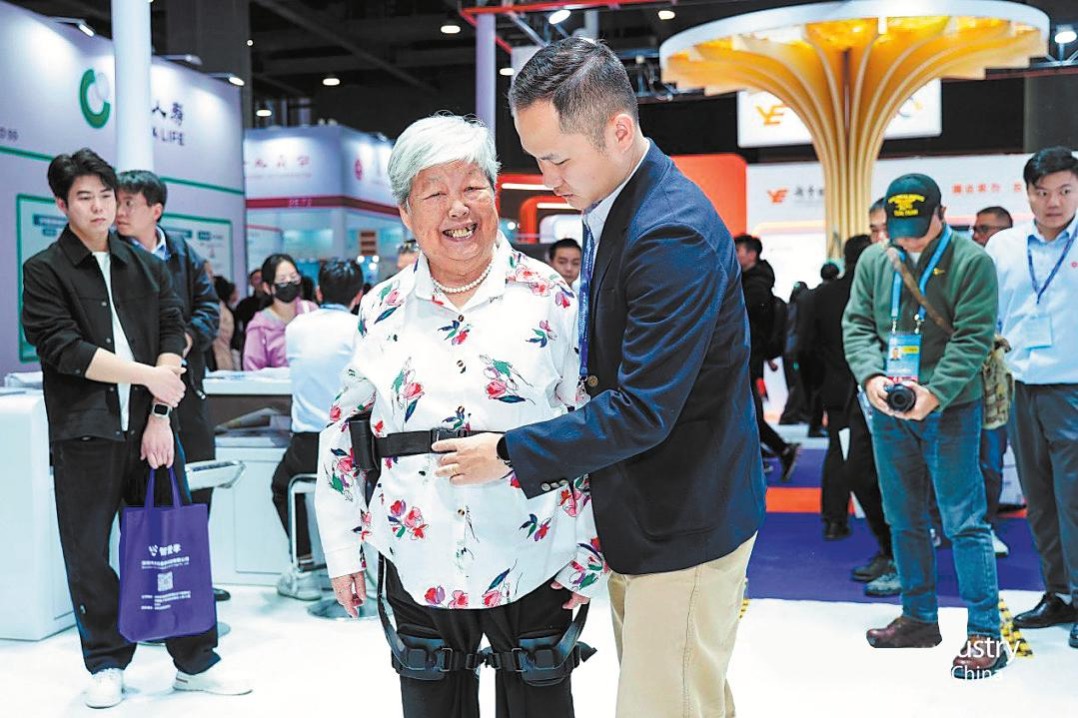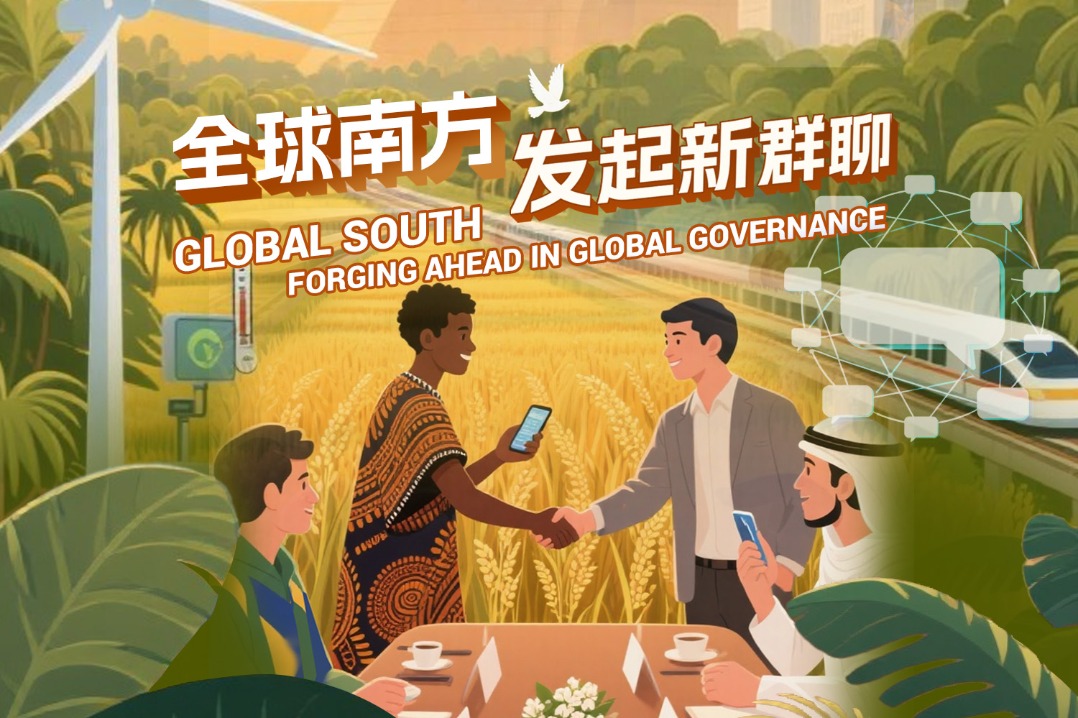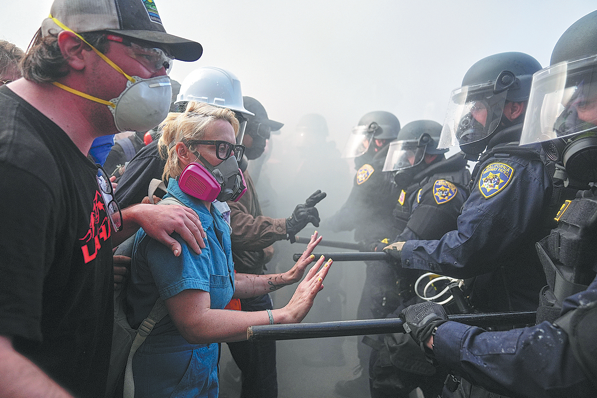China and the World in the New Era
China Daily | Updated: 2019-09-28 10:27
Artemisinin contributes to the fight against malaria. Artemisinin is an anti-malarial drug discovered by Chinese scientists in the 1970s. Artemisinin-based combination therapy is considered by the World Health Organization (WHO) to be the best available treatment for malaria. Over the past 20 years, it has been widely used in malaria-endemic areas around the world. The WHO recognizes that the treatment has saved millions of lives worldwide and cured more than 100 million patients every year.
China's high-speed rail promotes world connectivity. Since the Belt and Road Initiative was proposed, China's high-speed rail has entered foreign markets at a growing pace. It has reached dozens of countries in Asia, Europe, Africa, and the Americas, and its overseas market share is growing steadily. It has promoted local economic development and employment.
China's communications technology bridges the global "digital gap". Chinese telecommunications enterprises actively "go global" and strive to promote global digitization, so as to benefit more people around the world. By 2018, Huawei was supporting more than 1,500 networks in more than 170 countries and regions, providing smooth communication to more than 3 billion people around the world. It had provided communication solutions to remote mountain areas in dozens of countries, including Ghana, Nigeria, Kenya and Algeria, serving a rural population of 40 million. As of June 2019, Huawei had secured 50 5G commercial contracts worldwide and delivered more than 150,000 base stations.
Opening up should be mutually beneficial rather than a zero-sum game. Only mutual benefit can endure. China is committed to further expanding imports, relaxing market access, improving the business environment, and strengthening the protection of intellectual property rights. Other countries should also open wider to the world and take corresponding measures to improve their business environment. Only by moving towards each other can we create a development environment that is open, inclusive, balanced and beneficial to all, make the "cake" of development bigger, and form a mutually beneficial community of shared interests.
3. China is providing more public goods to the international community
The Chinese have always believed that "You yourself desire rank and standing; then help others to get rank and standing". We care for the people of the world and strive for the greater good while pursuing our own development. China has benefited from the international community for its development, and it has never forgotten to provide it with more and better public goods in return.
We will build a high-quality Belt and Road together with our partners. The Belt and Road Initiative is based on the principles of extensive consultation, joint contribution and shared benefits, and is guided by the Silk Road spirit characterized by peace, cooperation, openness, inclusiveness, mutual learning and mutual benefit. With a focus on policy coordination, connectivity of infrastructure, unimpeded trade, financial integration and closer people-to-people ties, it has transformed from ideas into action, from vision into reality, from a conceptual initiative into a globally popular public product (see Box 10). In November 2016, the United Nations adopted a resolution welcoming economic cooperation initiatives such as the Belt and Road Initiative. In March 2017, the United Nations Security Council called on all countries in its resolution to promote the initiative and the building of a global community of shared future. The Belt and Road Initiative originated in China, but the opportunities and achievements belong to the whole world. According to a World Bank research report, the initiative will help 7.6 million people out of extreme poverty and 32 million out of moderate poverty. It will increase trade in participating countries by 2.8 to 9.7 percent, global trade by 1.7 to 6.2 percent and global income by 0.7 to 2.9 percent. The initiative is a veritable road to resource sharing, shared prosperity and common development.
Box 10 Fruitful Results Have Been Achieved Since the Belt and Road Initiative Was Put Forward
The first is in policy coordination. Since the initiative was put forward, it has received positive responses from more than 160 countries, regions, and international organizations. By the end of August 2019, the Chinese government had signed 195 Belt and Road cooperation documents with 136 countries and 30 international organizations.
The second is in infrastructure connectivity. Great progress has been made in the construction of key interregional and intercontinental railway networks such as the China-Laos Railway, China-Thailand Railway, Hungary-Serbia Railway and Jakarta-Bandung High-Speed Railway. By the end of June 2019, a total of 16,760 China-Europe freight trains had carried almost 1.5 million TEUs of goods, reaching 16 countries and 53 cities abroad.
The third is in unimpeded trade. China has set up 18 pilot free trade zones. Since the First Belt and Road Forum for International Cooperation in 2017, China and other countries along the routes have signed more than 100 customs inspection and quarantine cooperation documents and established more than 40 customs inspection and quarantine cooperation mechanisms. From 2013 to 2018, the imports and exports of goods between China and other Belt and Road countries totaled nearly US$6.5 trillion.
The fourth is in financial integration. The open, pluralistic and market-oriented investment and financing system has continuously improved. By the end of the first quarter of 2019, the People's Bank of China, the International Finance Corporation of the World Bank Group, the European Bank for Reconstruction and Development, and the African Development Bank had jointly financed nearly 200 projects covering more than 70 countries and regions. By the end of 2018, Chinese enterprises had invested more than US$90 billion in Belt and Road countries, and the turnover of contracted projects had exceeded US$400 billion.
The fifth is in closer people-to-people ties. As of July 2019, of the 136 countries that had signed Belt and Road Initiative cooperation documents with China, China had concluded mutual visa exemption agreements with 113 countries covering different types of passports, and visa facilitation agreements or arrangements with 25 countries. Since the Belt and Road Initiative was launched in 2013, China has concluded mutual visa exemption agreements with 71 participating countries and visa facilitation agreements or arrangements with 11. Since the First Belt and Road Forum for International Cooperation, China has provided RMB2 billion in emergency food assistance to developing countries along the routes, and has launched 100"happy home" projects, 100 poverty alleviation projects, and 100 healthcare and rehabilitation projects. In 2017, 38,700 people from countries along the routes studied in China on scholarships from the Chinese government. In 2018, China hosted 500 young scientists from other Belt and Road countries to conduct research exchanges.
























